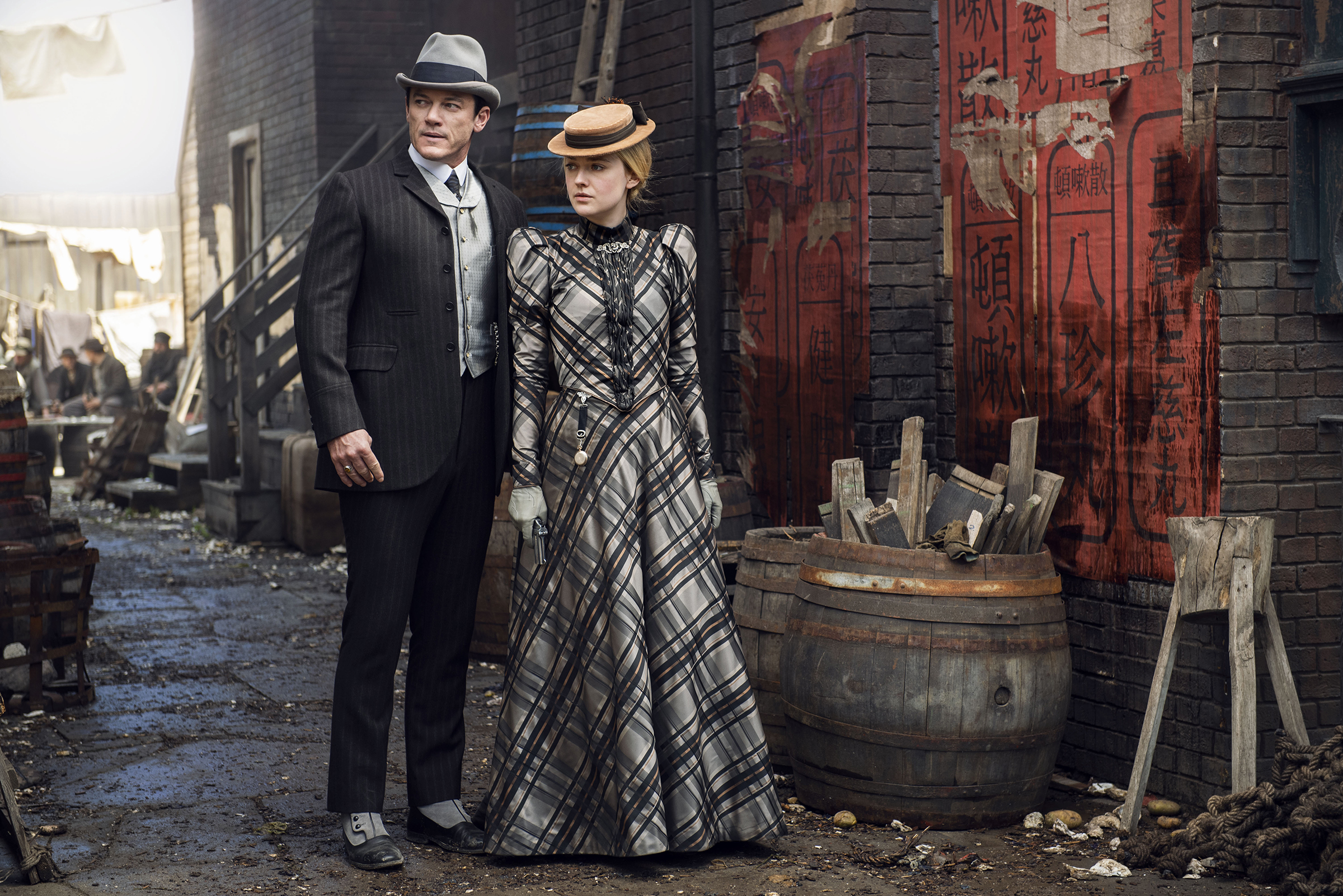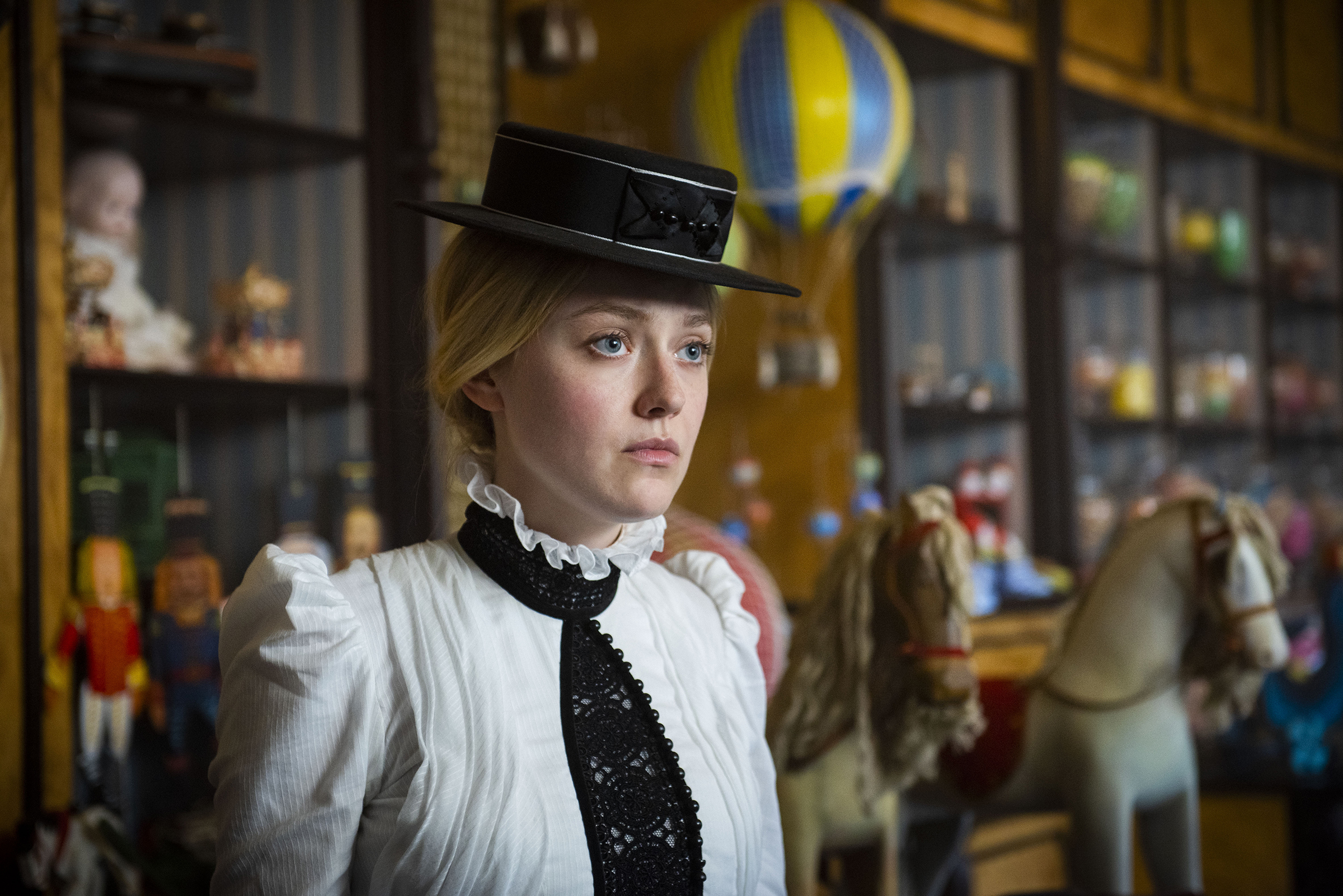
- Fashion
Immersing into Victorian New York City
Daniel Brühl, Luke Evans, and Dakota Fanning reunite for the series’ sequel of The Alienist, The Alienist: Angel of Darkness, a murder mystery set in New York City in 1897. Dr. Lazlo Kreizler (Brühl), the self-described alienist, works alongside private detective Sara Howard (Fanning) and New York Times reporter John Moore (Evans) in order to find the Spanish Consul’s kidnapped daughter.
The TNT series is one of the only shows currently on air that is set in the turn-of-the-century period. In order to recreate 1897 New York, an elaborate set was built in Budapest. Production designer Ruth Ammon said, “This year, Caleb Carr’s Angel of Darkness is set in the summer in New York, mostly during the daytime. It’s been a really interesting challenge to keep the dark gothic feel of season one – we’ve rebuilt, redressed, repainted. We’ve changed the characters of these streets multiple times to be working-class communities, business communities. We built Central Park and Fifth Avenue.”
In addition to the set design, costumes are imperative to establish not only the show’s setting but also its character.
The Alienist: Angel of Darkness costume designer Rudy Mance was an assistant costume designer to Michael Kaplan on the original series. On working with Rudy Mance, actress Dakota Fanning said, “There are a lot of culottes that Sara Howard wears this time around. That’s just a detail that is noticeable. But also, for a man who wouldn’t have approved, it almost looks like a skirt, but it’s not.” Daniel Brühl noted,” “(The costume department) has done incredible work in creating these costumes, handmade – even the extras’ clothes. It helps you massively as an actor to understand the time and to also understand the restriction literally of how you move and how you behave. It brings you back to that Victorian era.” Luke Evans, whose character is known to be a “very dapper dresser”, agreed saying, “It’s always nice to look in the mirror when you do period costume and you don’t see yourself.’
Rudy Mance has previously worked on esteemed shows such as Pose, The Leftovers, and The Knick. Mance received an Emmy nomination for Outstanding Period Costumes for the original series The Alienist.

“I found the fabric for this walking suit of Dakota’s character, Sara Howard, at the bottom of a bargain bin of a fabric shop’s basement while prepping the show in Vienna,” Mance says. “The whole bolt cost less than 20 euros.”

“These were among the first fabrics I found in L.A. early on, and I immediately knew they were for Luke and Dakota. Her suit here is based on a man’s tail suit, which I saw as her way of summoning strength through the costumes, as being the only woman in a packed room of men. These are culottes that she’s wearing here, a theme for her I carried throughout the show. And the belt is the bottom half of a waistcoat.”

“Ted Levine’s character, Thomas Byrnes, was based on the real-life former Police Commissioner of the same name. Although he was more of a fixer to certain members of upper-class society than a member of it himself, I always tried to give him a slightly flashy, sometimes garish look. “

“On my initial mood boards while developing the characters’ costumes I took actual period references of the time and combined them with more recent fashion runway references. I wanted to create a modern edge to the series, without looking too overly stylized.”

“This was another bolt of fabric I found for roughly 20 euros. When I picked it up, I knew it was for Dakota’s character, Sara. It’s hard to see here, but it has the most incredibly subtle herringbone texture to it.”

“Robert Wisdom as Cyrus Montrose was a dream to dress. Physically, he’s a towering figure. He can pull off almost anything. The oversized top hat and carpet coat would’ve looked wrong on anyone else. We hand-dyed everything you see here.”

“I put Dakota’s character in pants many times throughout the series. I wanted it to be her signature style, strong, sophisticated, with her silhouette remaining period-appropriate.”

“Bottle green was a staple color Michael Kaplan and I decided on for Daniel Brühl’s character, Dr. Laszlo Kreizler, during the first series, and one I was happy to carry on with during the second series.”